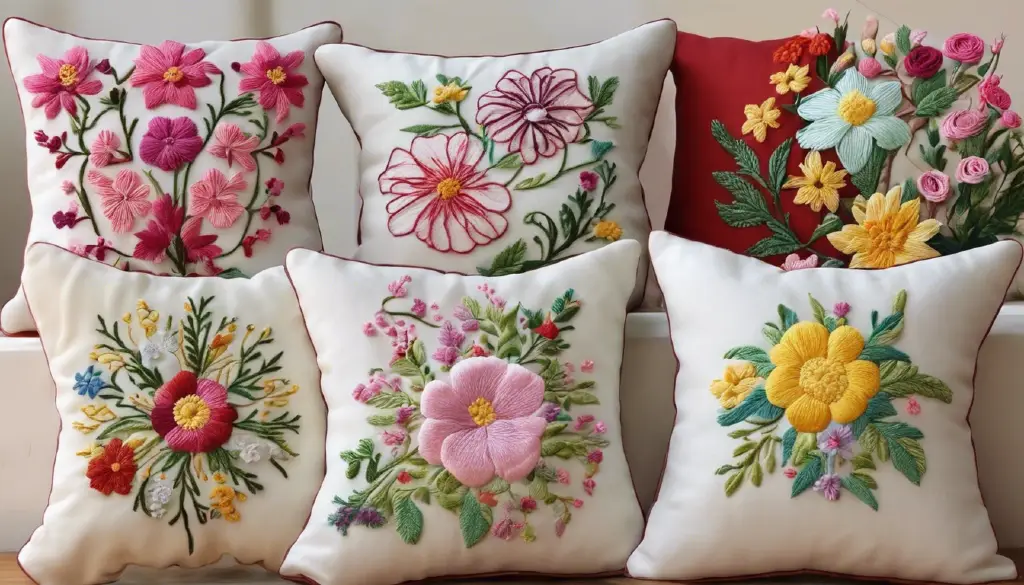In a world where personalization and craftsmanship reclaim their rightful places in home décor, beautiful hand embroidery designs for cushion cover emerge as a testament to creativity and skill. These embroidered designs transform ordinary pillow covers into exquisite pieces of art, adding a touch of elegance and personality to any room. Moreover, the resurgence of traditional techniques like crewel and sashiko embroidery highlights a growing appreciation for the intricate and labor-intensive processes that yield such breathtaking results. Embroidery designs for pillow covers not only serve as a showcase of artistic expression but also embody the meticulous care and attention to detail of their creators.
As we delve into the myriad of options available, this article will explore the top 10 beautiful hand embroidery designs for cushion covers, providing readers with a rich tapestry of inspiration. From the delicate intricacies of floral and geometric embroidery designs to the vibrant depictions found in animal motifs and cultural patterns, each category offers unique allure and storytelling potential. Further, we will touch upon abstract, nature-inspired, personalized, and festive seasonal designs, demonstrating the vast scope of creativity that hand embroidery unleashes. Each section aims to not only inspire but also ignite a passion for hand-crafted beauty in the realm of home décor.
Floral Embroidery Designs
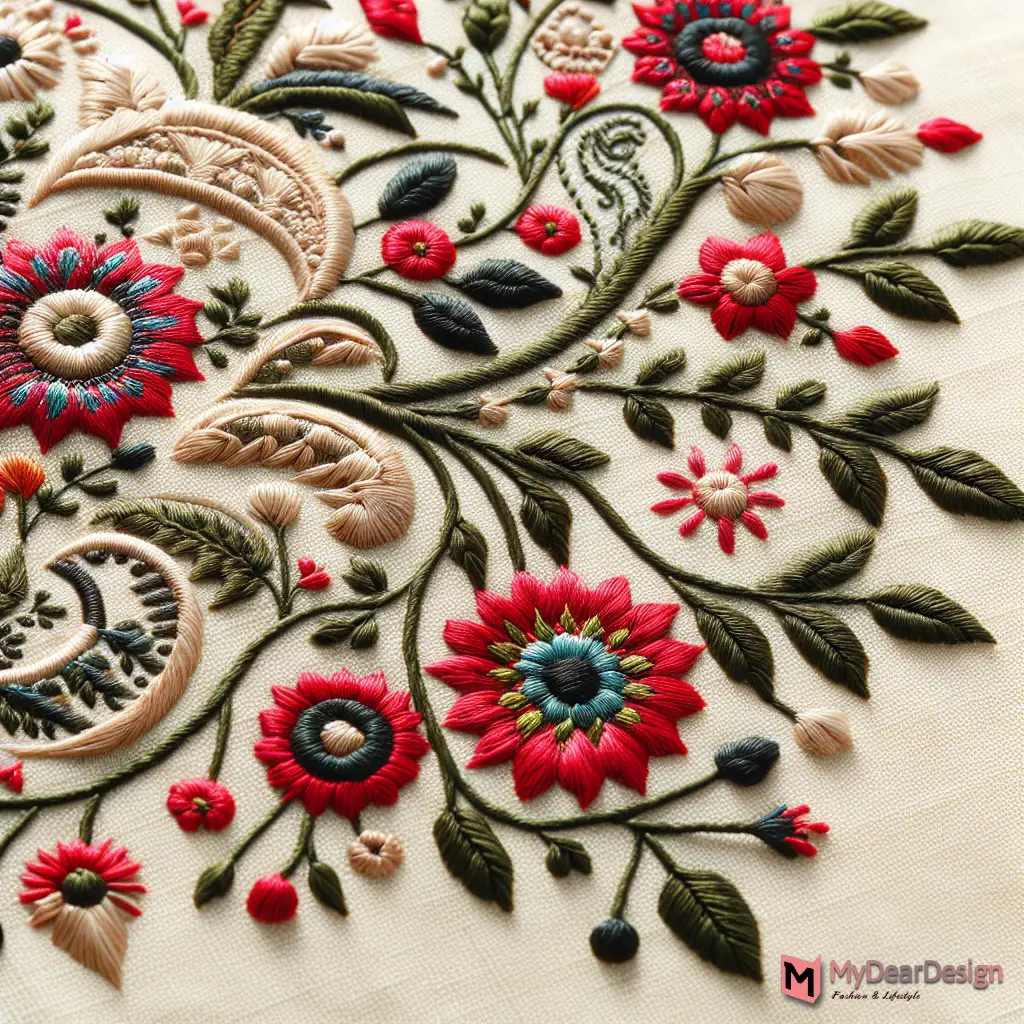
Floral embroidery, with its rich heritage and versatility, remains one of the most popular choices for enhancing cushion covers. This style of embroidery often involves intricate stitches that depict various floral patterns, each bringing its own unique aesthetic to fabric.
Types of Floral Embroidery
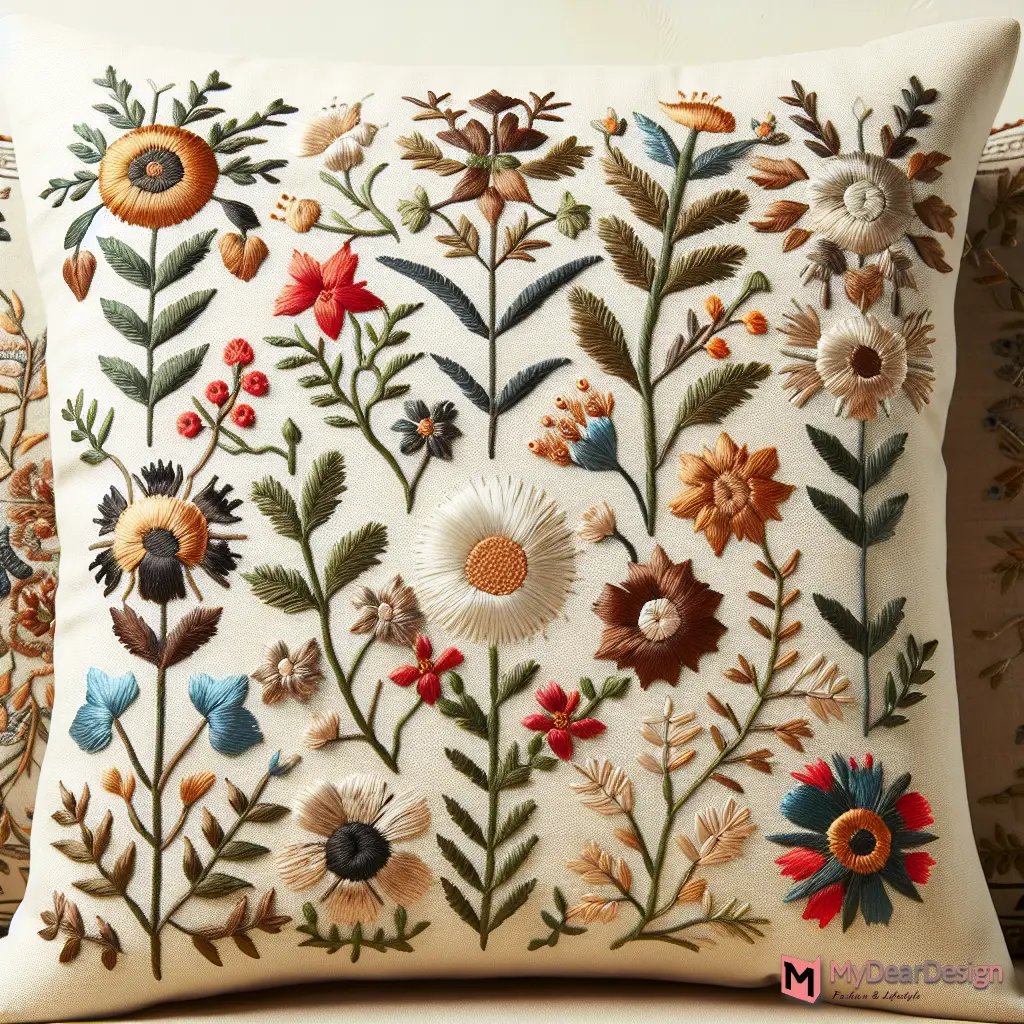
There are several types of floral embroidery that vary depending on the technique and the cultural influences behind them. Some of the most distinguished types include:
- Crewel Embroidery: Originating from the medieval era, this technique uses wool to create slightly raised, dimensional floral designs that add a textured look to cushion covers.
- Cross Stitch: Utilizing x-shaped stitches, this method allows for detailed and precise floral patterns, often resembling pixel art.
- Jacobean Embroidery: Known for its elaborate designs of flora and fauna, Jacobean embroidery uses a variety of threads and stitches to create vibrant, detailed compositions on textiles.
Examples of Floral Embroidery on Cushions
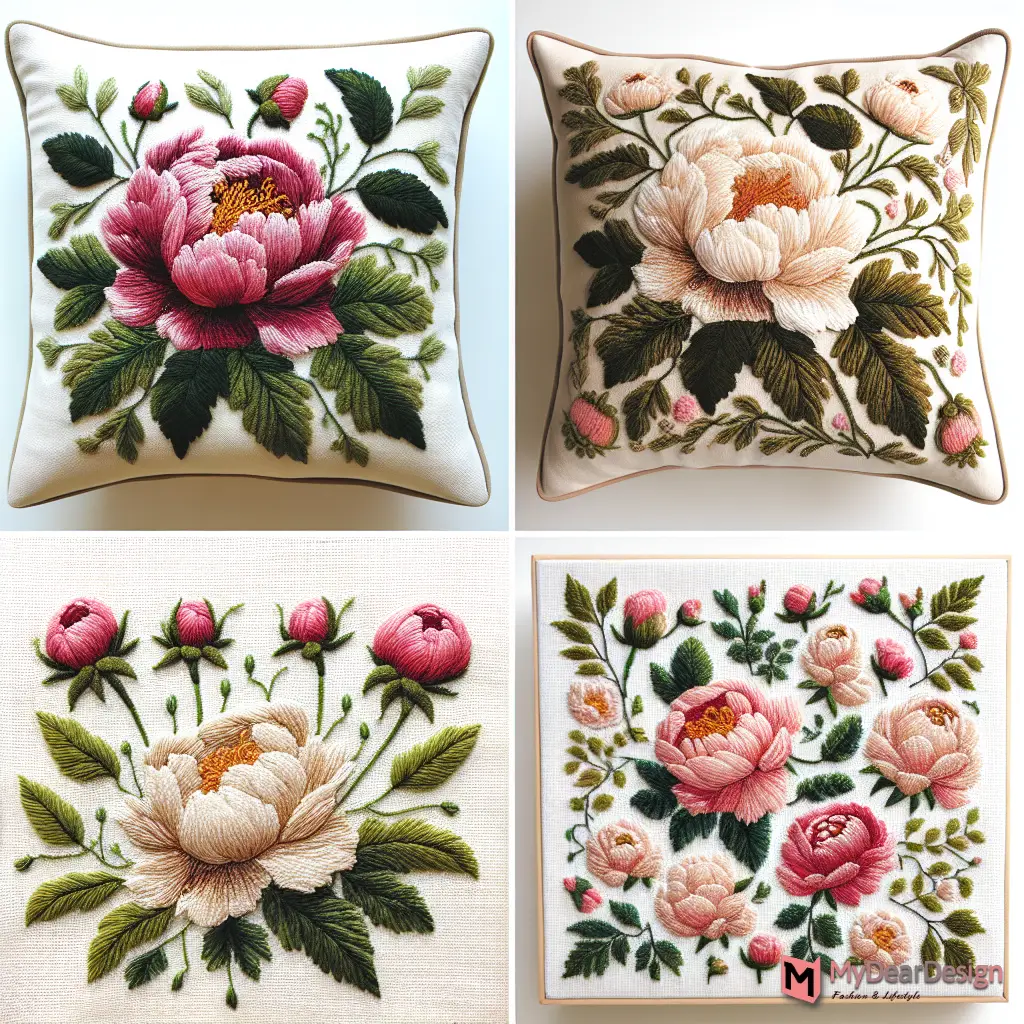
To illustrate the diversity and beauty of floral embroidery, here are some examples that highlight how these techniques can transform a simple cushion cover:
- A cushion featuring crewel embroidery might display a large, lush peony with intricate leaves and stems, adding a vintage charm to modern interiors.
- A cross-stitched cushion could showcase a series of small, delicate roses arranged in a symmetrical pattern, offering a classic and elegant look.
- For a more dramatic effect, a cushion with Jacobean embroidery might depict an exotic garden scene with various flowers and wildlife, making it a standout piece in any room decor.
Each of these examples showcases the meticulous craft of hand embroidery, highlighting the detailed work and time invested in creating each piece. This makes embroidered cushions not just functional items but also works of art that bring personality and style to home interiors.
Geometric Embroidery Designs
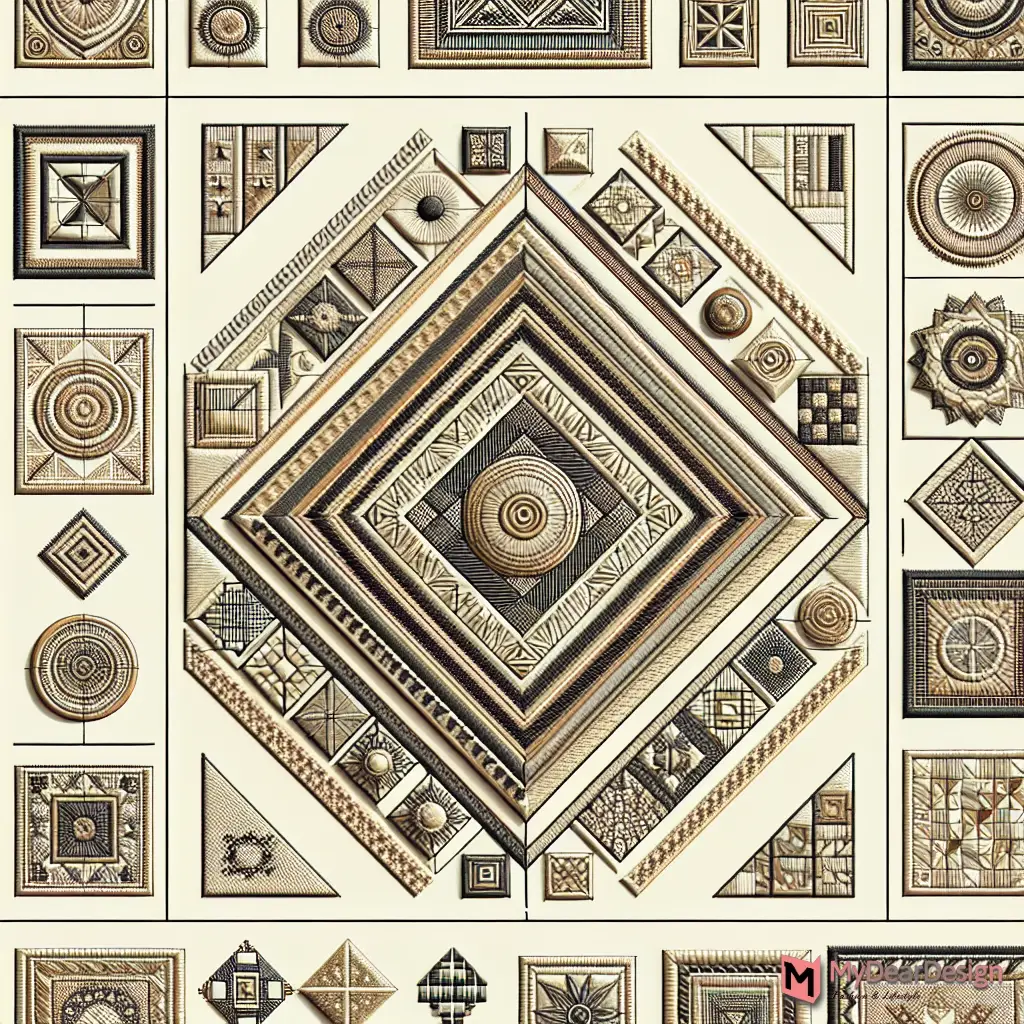
Geometric embroidery designs are celebrated for their clean lines, symmetry, and repetitive shapes, offering a timeless appeal to any textile project. These designs are not only visually striking but also versatile, easily adapted to various projects from home decor to fashion accessories.
Popular Geometric Patterns
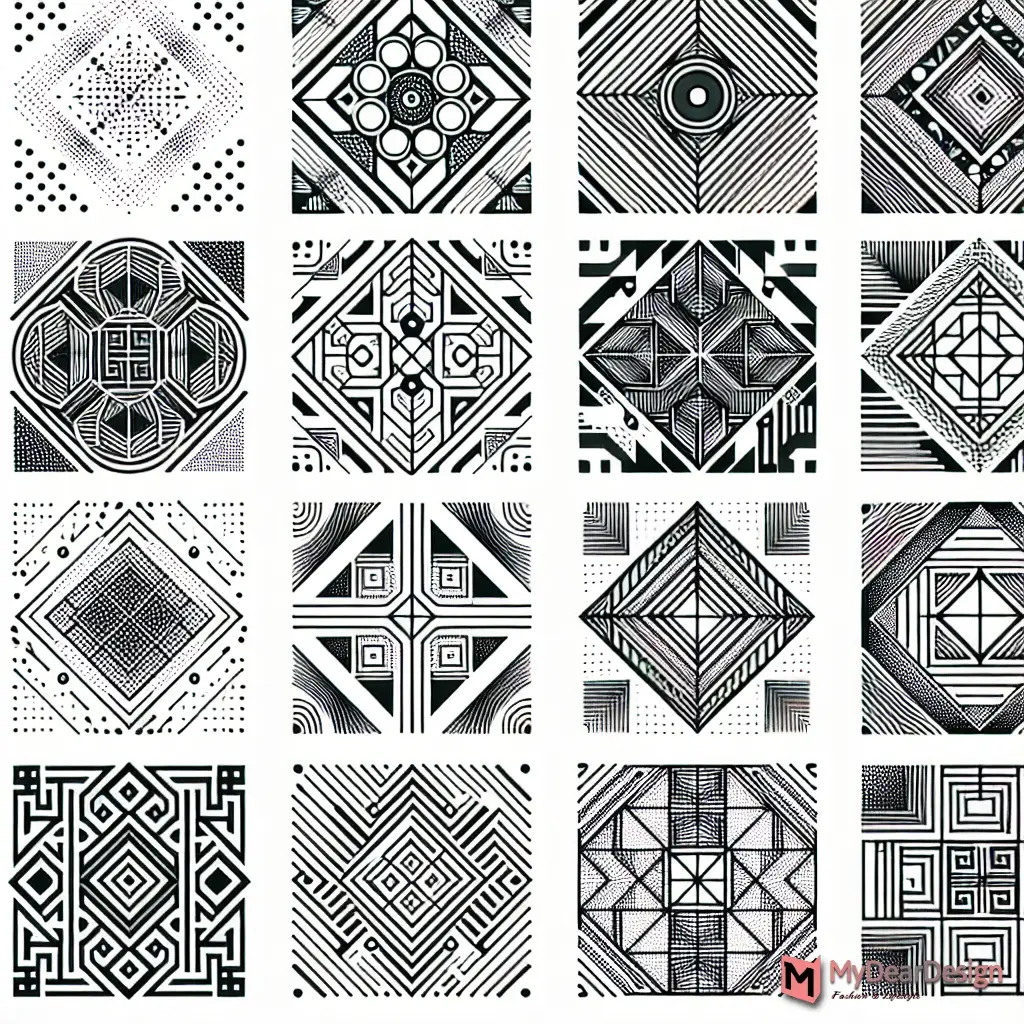
Geometric patterns can range from simple shapes like triangles and hexagons to more complex arrangements involving interlocking shapes and lines. Some popular patterns include polka dots, stripes, and squares, each varying in scale and spacing to create unique visual effects.
Steps to Create Geometric Designs
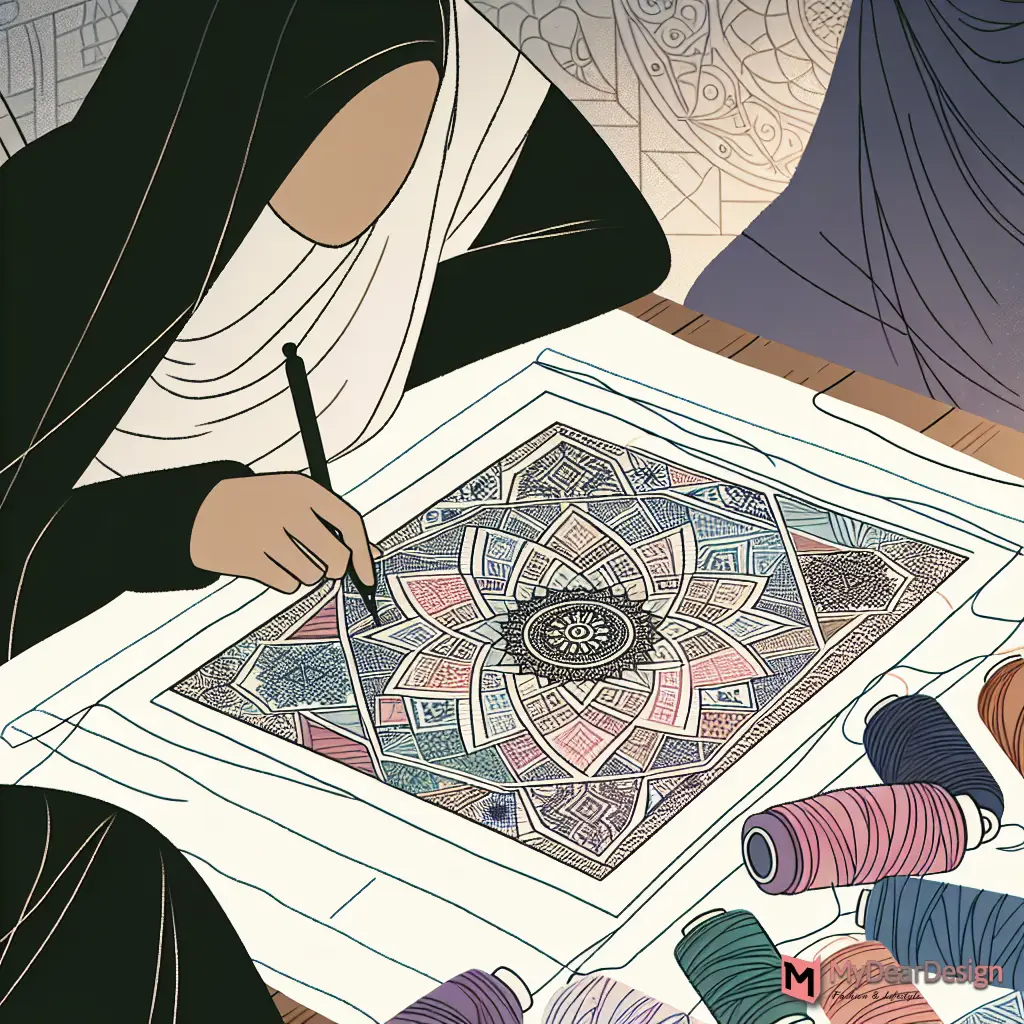
To begin crafting geometric embroidery designs, one should first select a pattern that resonates with their aesthetic preference. This could be a straightforward, repeating shape or a more intricate design. The next step involves transferring this pattern onto the fabric. This can be achieved through several methods, such as tracing the design directly onto the material or using a water-soluble stabilizer as a temporary guide.
Choosing the right thread colors and stitches is crucial. Geometric designs often stand out when executed with bold, contrasting colors and a mix of stitches like satin stitch, backstitch, and running stitch. As the embroidery progresses, careful attention must be paid to the placement and alignment of stitches to ensure a clean and cohesive finish.
For those looking to incorporate these designs into practical items like cushion covers, a simple yet effective method involves using scrap fabrics. One can start by cutting fabric pieces into geometric shapes, such as triangles, and sewing them together to form the desired pattern. This approach not only recycles materials but also adds a personalized touch to the decor.
In summary, geometric embroidery offers a dynamic range of possibilities for enhancing textile projects. By following these steps and exploring various patterns, one can create stunning designs that elevate the aesthetic of any item.
Animal Motif Embroidery Designs
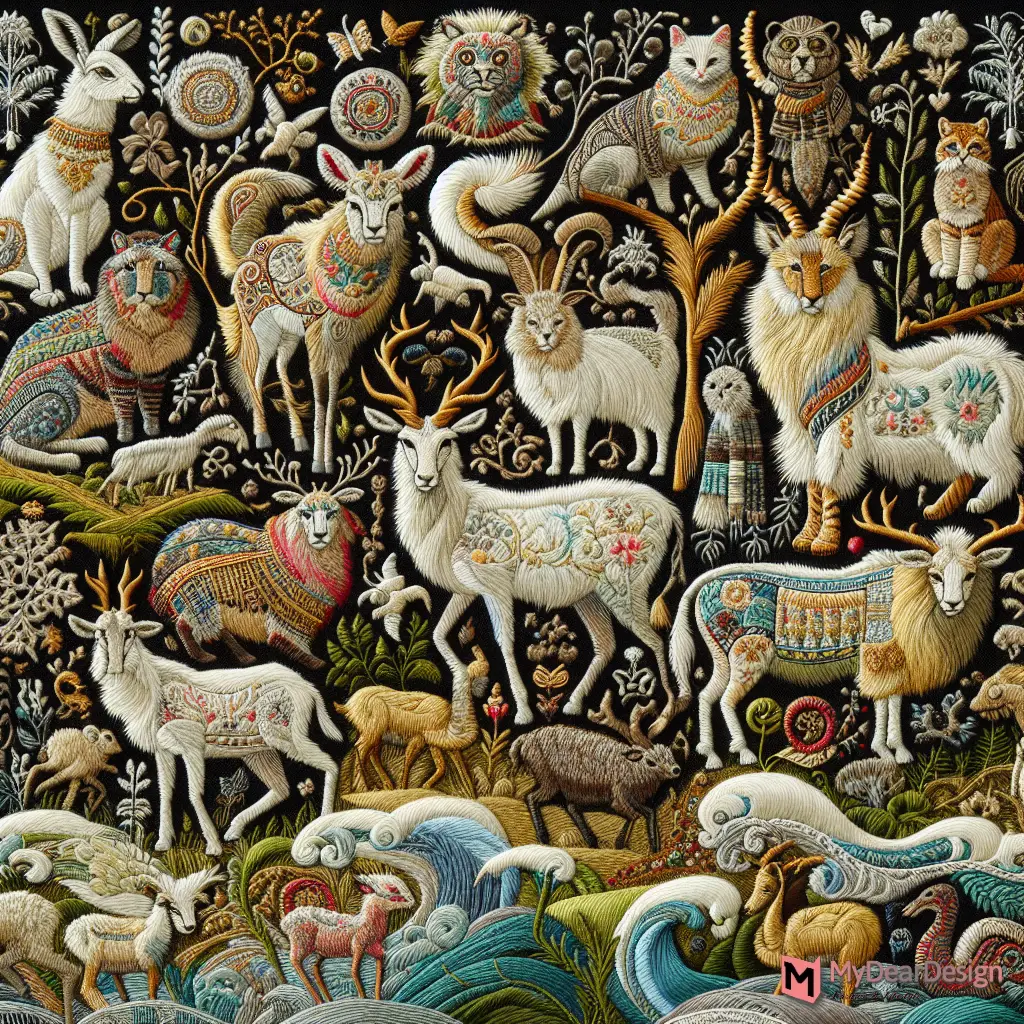
Animal motif embroidery introduces a delightful array of creatures into the realm of textile art, making it a popular choice for those looking to add a touch of nature and whimsy to their cushion covers. These designs often feature a wide range of animals, each bringing its own unique character and style to the fabric.
Common Animal Motifs
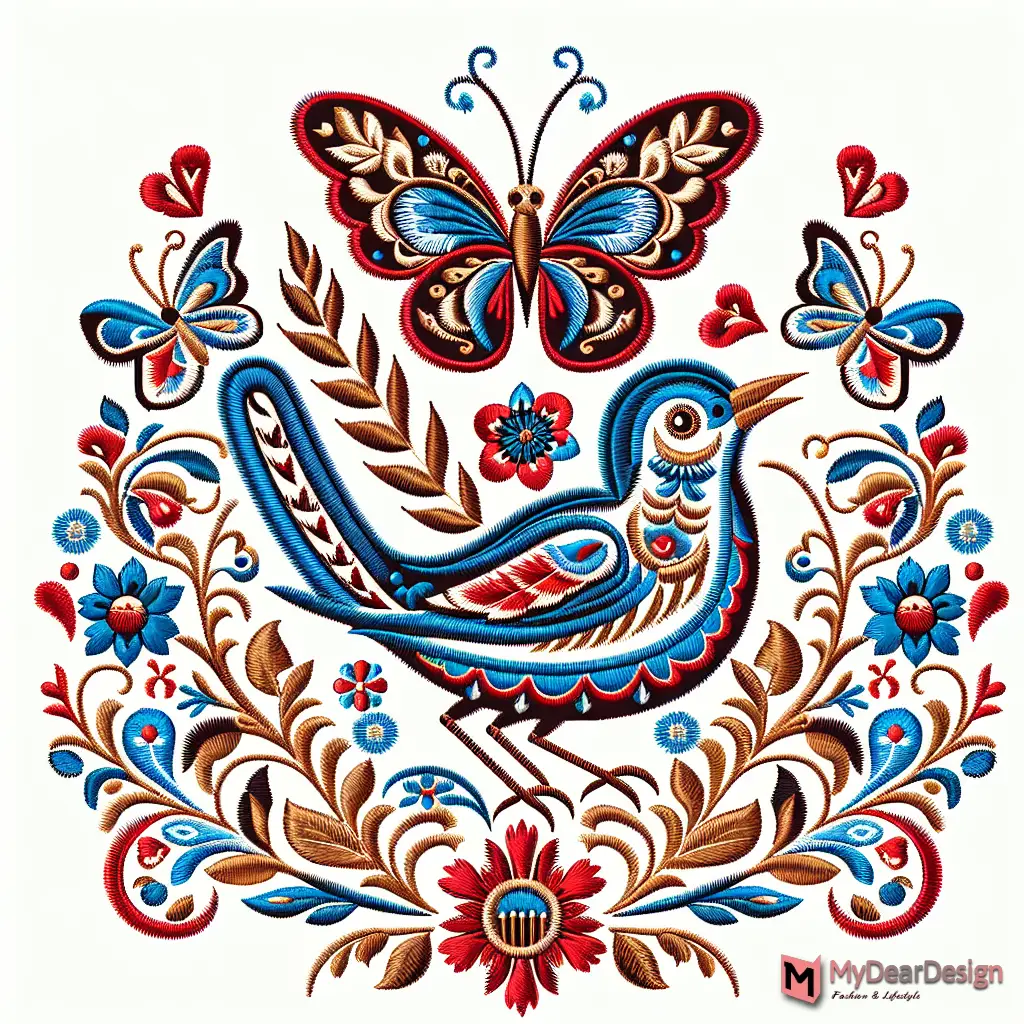
Commonly used animal motifs in embroidery include a diverse set of creatures such as birds, butterflies, and various other animals. These motifs are not only charming but also carry cultural and symbolic meanings in many traditions. For instance, bird motifs are often seen as symbols of freedom and spiritual growth, while butterflies can represent transformation and rebirth.
Techniques Used for Animal Motifs
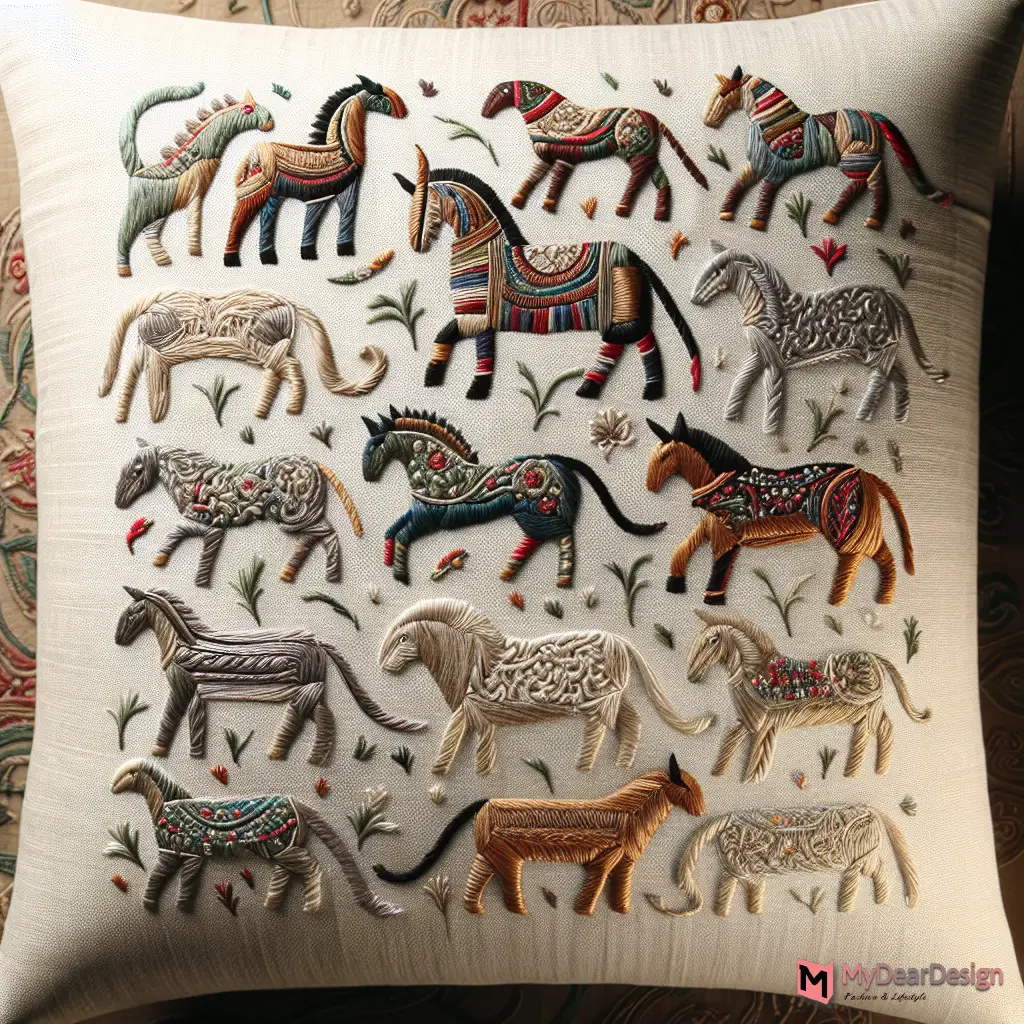
The creation of animal motifs in embroidery utilizes several intricate techniques to bring these designs to life with richness and detail. Appliqué is one technique where fabric shapes are cut and sewn onto the cushion cover fabric, often used to outline animals and add dimension. Cross-stitch, a method involving X-shaped stitches that form a grid, is popular for its ability to create detailed and precise animal patterns. Another fascinating technique is needle painting, also known as thread painting, which allows for realistic depictions of animals using a blend of stitches and colors to achieve a painterly effect.
These techniques enable embroiderers to express artistic visions through their work, transforming simple cushion covers into stunning pieces of functional art that enhance any living space.
Cultural and Traditional Embroidery Designs
Inspiration from Various Cultures
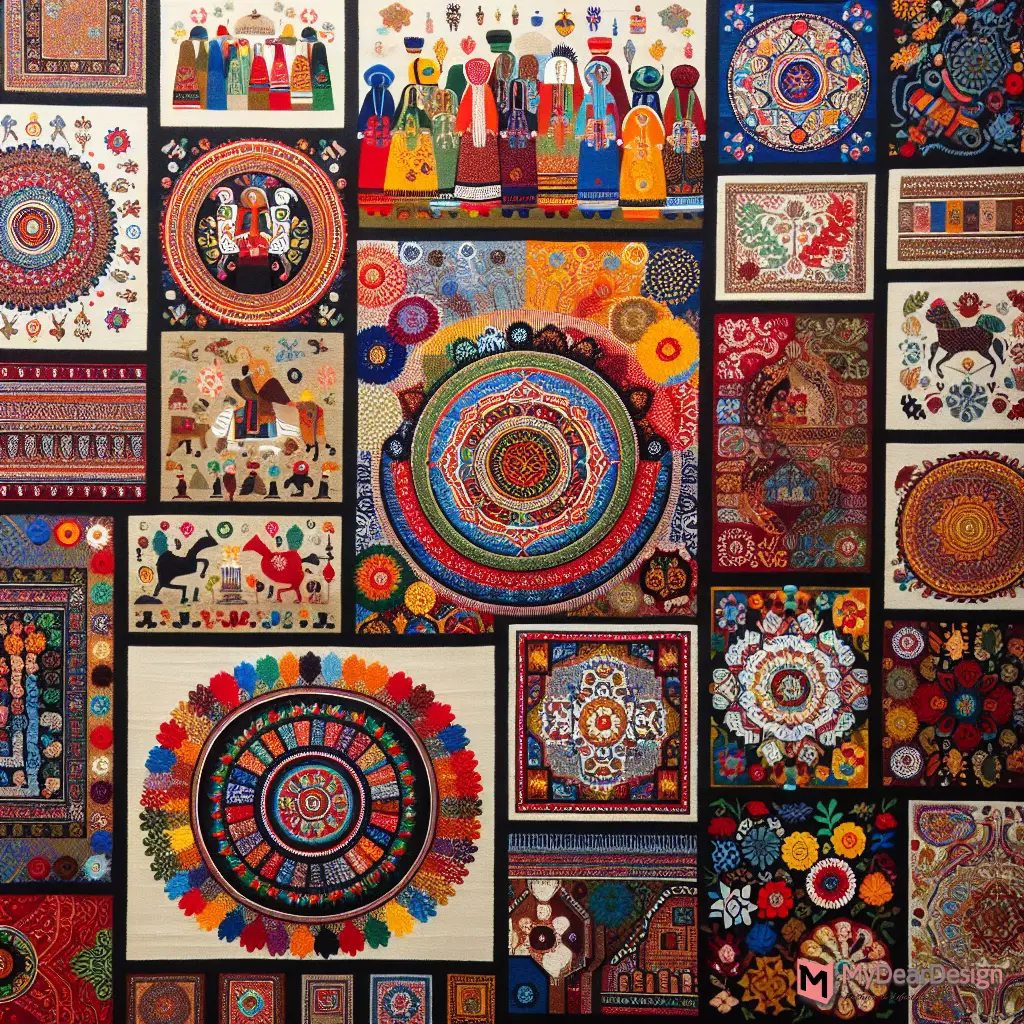
Cultural and traditional embroidery designs offer a rich tapestry of history and artistry, reflecting the customs and aesthetics of various societies. The Sindhi hand embroidery from the land of Sufis is a vibrant example, showcasing colorful patterns that are deeply rooted in the spiritual and artistic traditions of the region. Similarly, the Lambani and Rabari embroidery styles from India are distinguished by their intricate mirror and thread-work, which not only embellish cushion covers but also tell stories of nomadic heritage and community.
These traditional techniques often incorporate symbols and motifs that are significant to their respective cultures, such as the use of mirrors in Rajasthani embroidery, believed to ward off the evil eye and bring good luck. The detailed craftsmanship involved in creating these designs requires not only artistic skill but also a deep understanding of the cultural narratives they represent.
Traditional Embroidery Techniques
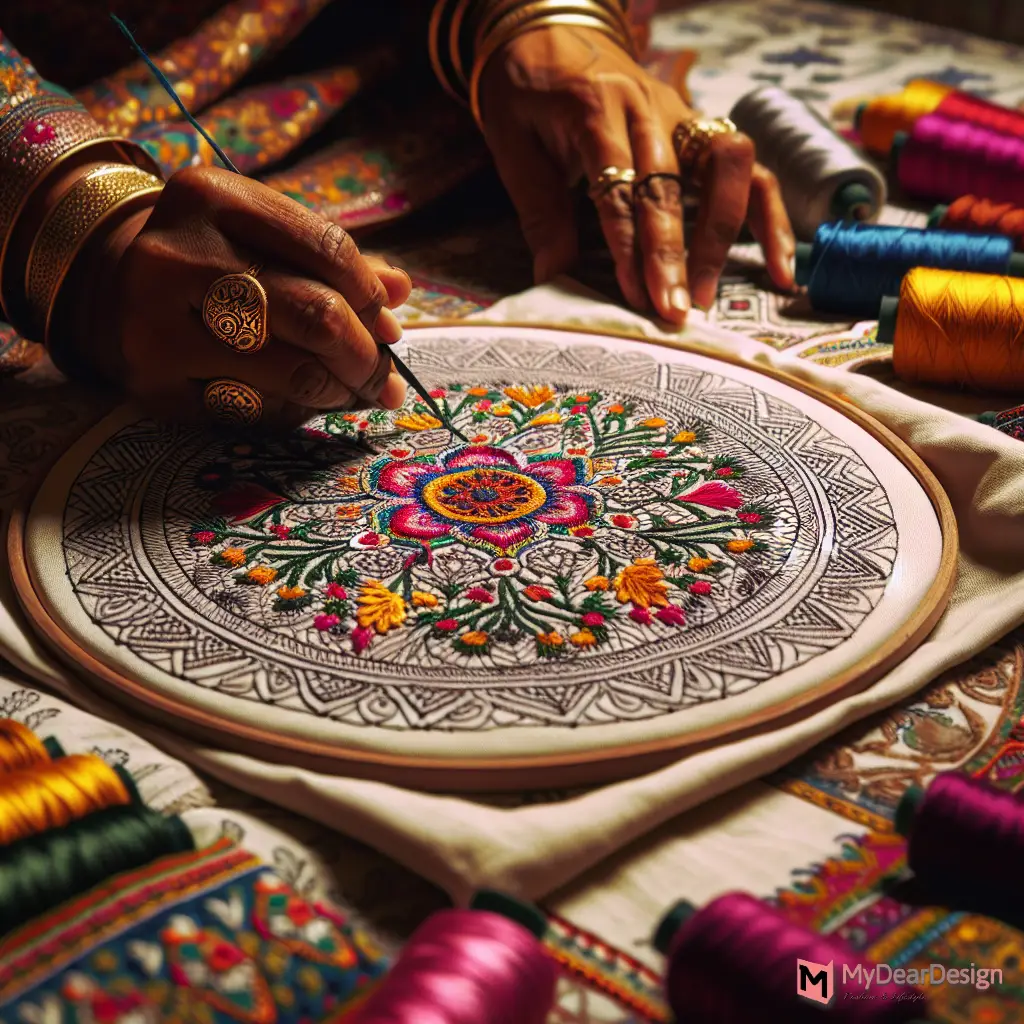
Traditional embroidery techniques are as diverse as the cultures they come from, each adding a unique texture and depth to fabric works. Techniques such as appliqué, where fabric pieces are sewn onto a larger piece of fabric, are popular for their dimensional quality and versatility. Cross-stitch and needle painting are also prevalent methods in cultural embroidery, allowing for detailed and vivid portrayals of traditional motifs.
In regions like Rajasthan, the process of creating embroidered cushion covers involves tracing patterns onto the cloth, followed by meticulous embroidery using silk threads. This not only enhances the visual appeal of the cushion covers but also ensures durability and color vibrancy, making them ideal for adding a touch of elegance to any living space.
These traditional methods are not only about decorating fabric but also about preserving and passing down skills that have been part of cultural heritage for generations. Each stitch and color used in these embroideries carries with it a story of its own, making each cushion cover not just a piece of home decor but a part of a larger cultural tapestry.
Abstract Embroidery Designs
Creative Abstract Designs
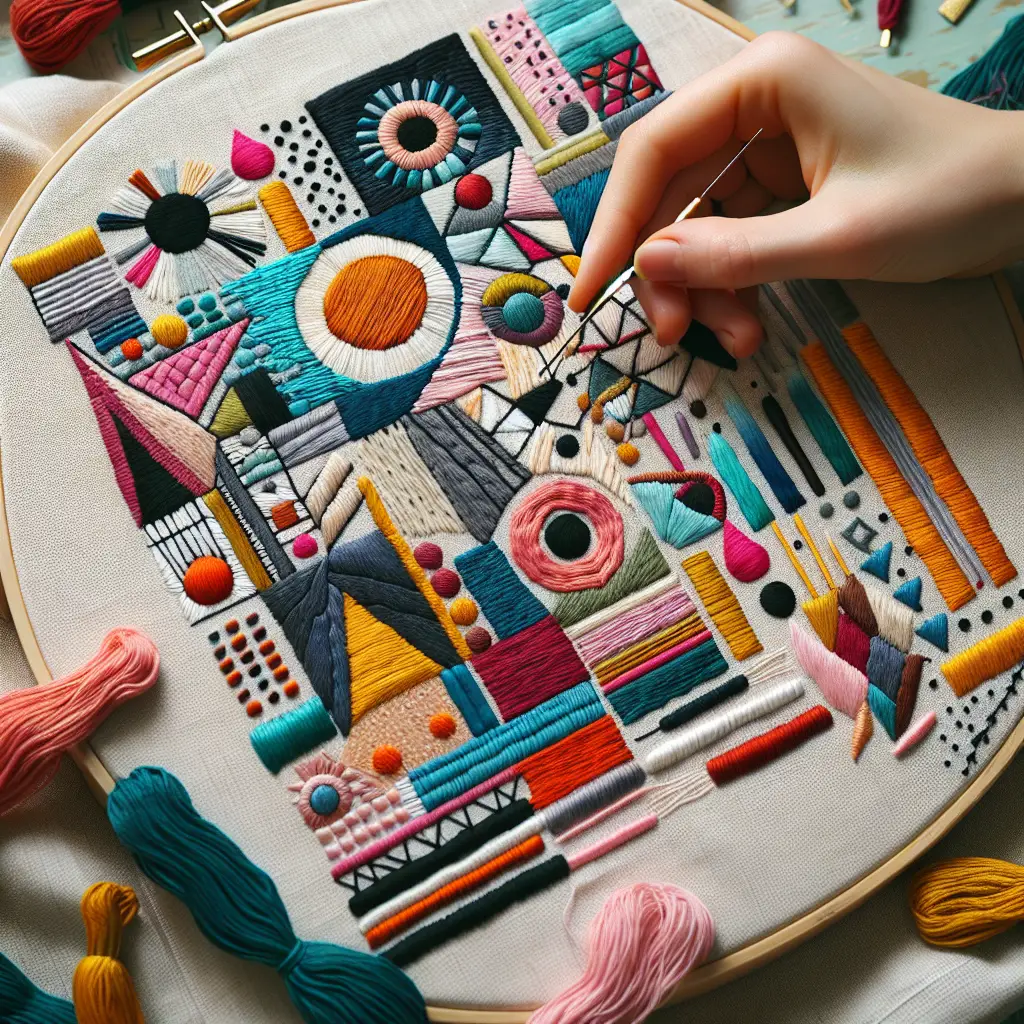
Abstract embroidery designs offer a modern twist to traditional needlework, allowing for artistic freedom and personal expression. Inspired by abstract and naive style art, these designs incorporate elements that might not depict realistic forms but instead focus on emotion and interpretation. For instance, one might draw inspiration from a costly cushion seen at The Conran Shop but create a personalized version that fits their budget and style preferences.
To start, the embroiderer uses a pencil or a printed template to outline their abstract design directly onto the cushion cover. This initial step is crucial as it sets the foundation for the embroidery work. Following this, various stitching techniques are employed to fill in the design. Backstitching is commonly used for its precision and strength, making it suitable for outlining and adding definition to abstract patterns.
After the main stitching is completed, ‘whipping’ the stitches adds texture and depth. This involves taking a second length of yarn and winding it around the existing backstitches, adding a dynamic and layered effect to the embroidery.
Materials Used for Abstract Embroidery
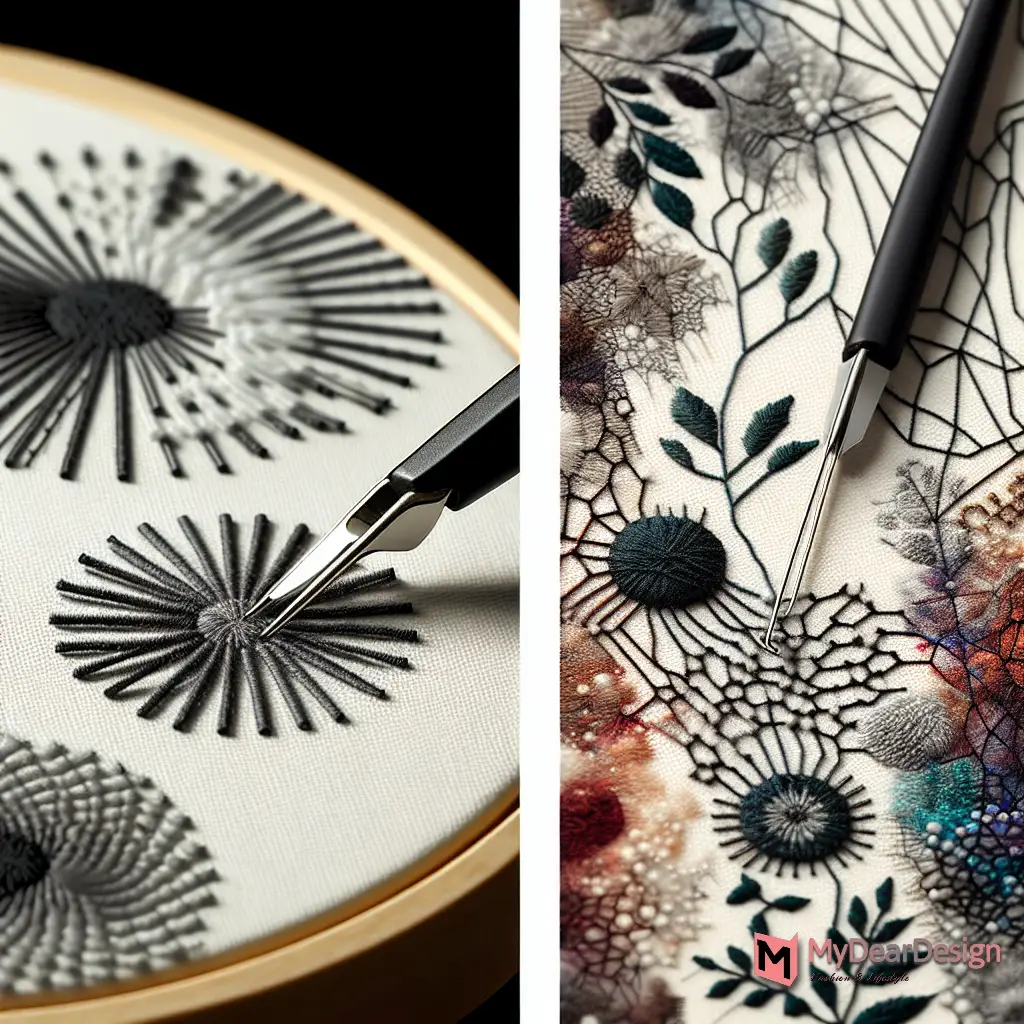
The choice of materials in abstract embroidery plays a significant role in the outcome of the design. Typically, acrylic yarn is preferred for its versatility and the slight stretch it offers, which can be advantageous for creating fluid, dynamic designs. However, embroiderers must ensure that the stitches are pulled tight to prevent the design from becoming distorted over time.
For those looking to integrate abstract designs into home décor, combining different textures and colors of yarn can enhance the visual impact of the embroidery. The use of vibrant colors or contrasting shades can turn a simple cushion cover into a striking piece of art.
In summary, abstract embroidery designs are not just about creating patterns but are an exploration of artistic expression through the medium of thread and fabric. By carefully selecting the design, materials, and techniques, one can transform a plain cushion cover into a unique and personal statement piece.
Nature-inspired Embroidery Designs
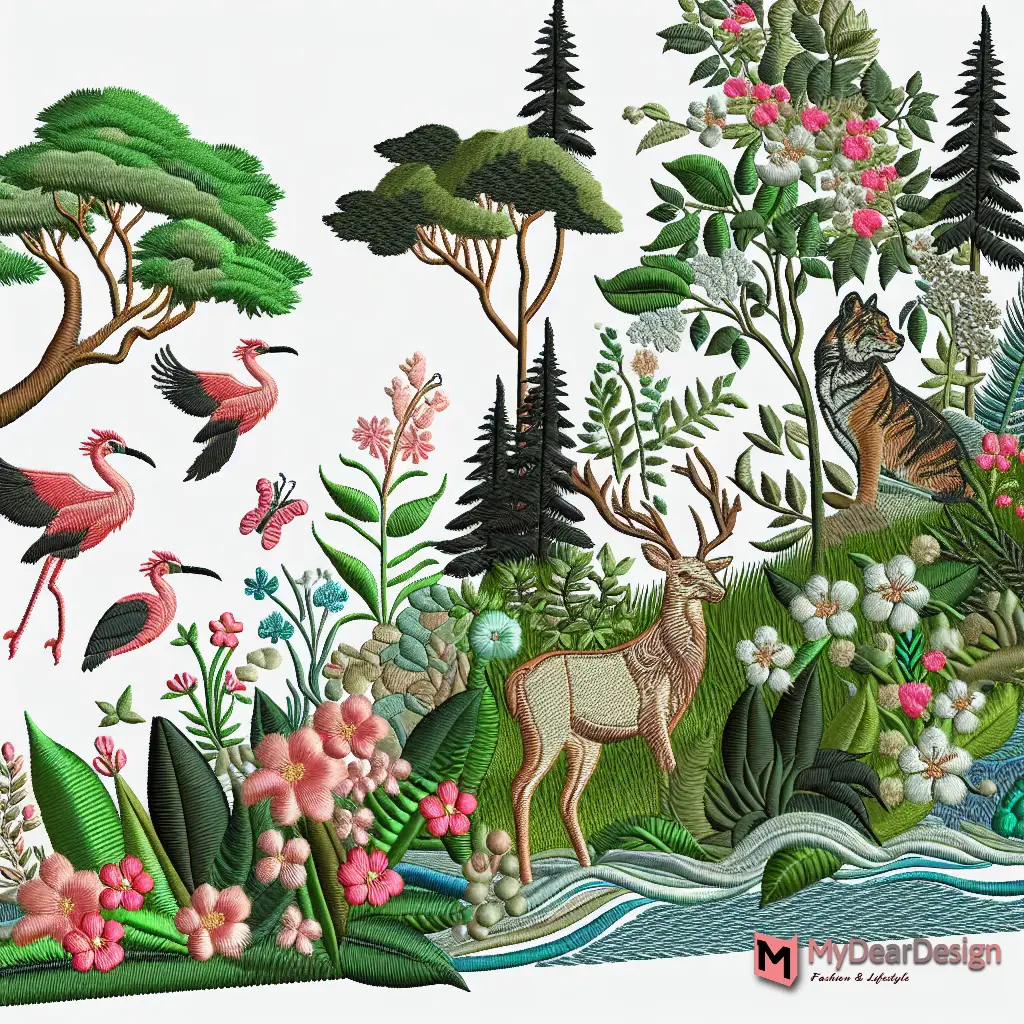
Nature-inspired embroidery designs captivate those who appreciate the serene beauty of the natural world. These designs often incorporate elements such as flowers, leaves, trees, and various animals, bringing a piece of the outdoors into home decor.
Popular Nature Themes
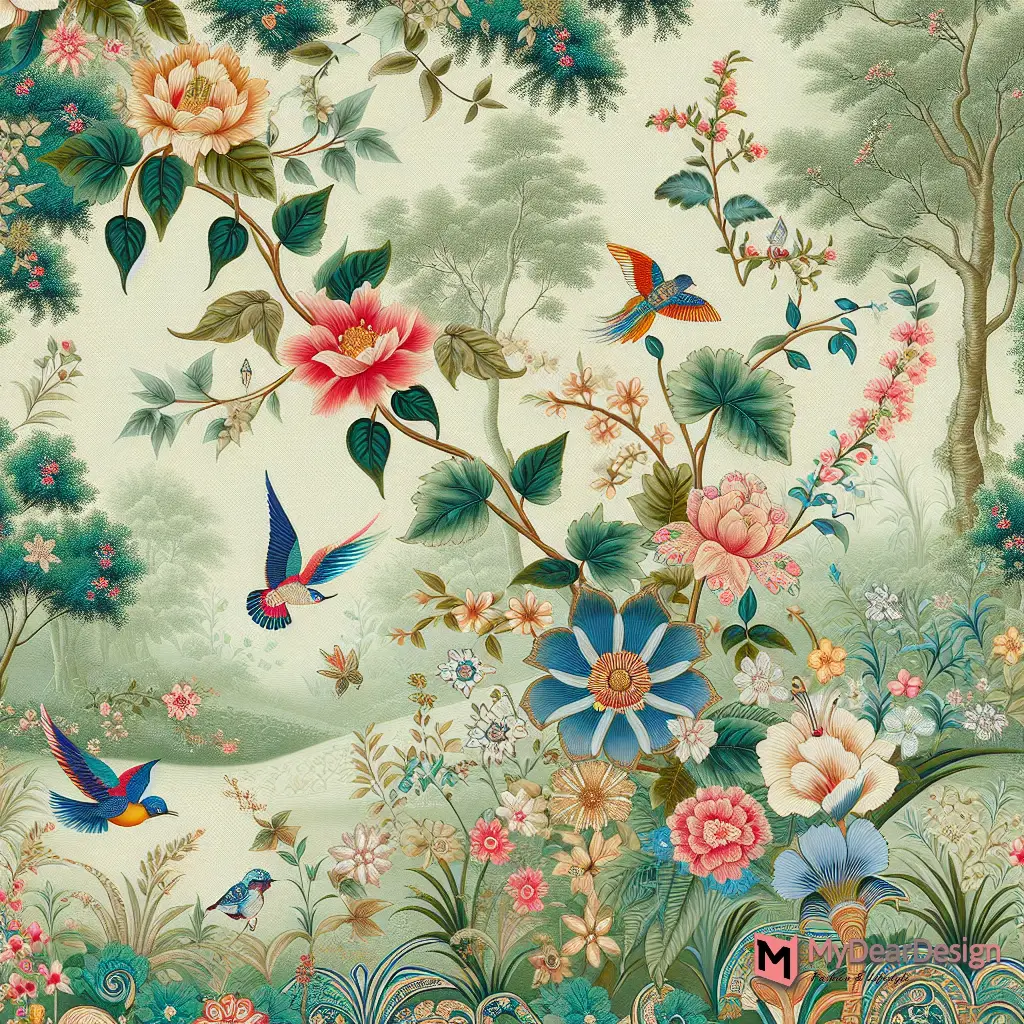
Floral patterns are a timeless choice within nature-inspired themes, featuring a variety of flowers that bring vibrant life to fabric. Leaf and foliage motifs are equally popular, creating a lush, green appearance that can transform any textile into a verdant canvas. Animal motifs add a whimsical touch, with creatures like birds and butterflies introducing an element of playfulness and fantasy to the designs.
Incorporating regional embroidery techniques can also enhance the appeal of nature-inspired designs. For example, Kashmiri embroidery, influenced by Persian and Mughal art, employs simple chain stitches to depict the scenic landscapes of Kashmir. This style, along with others like Chikankari and Phulkari, often uses satin stitch to make floral and faunal elements stand out beautifully on the fabric.
Combining Colors for Nature Designs
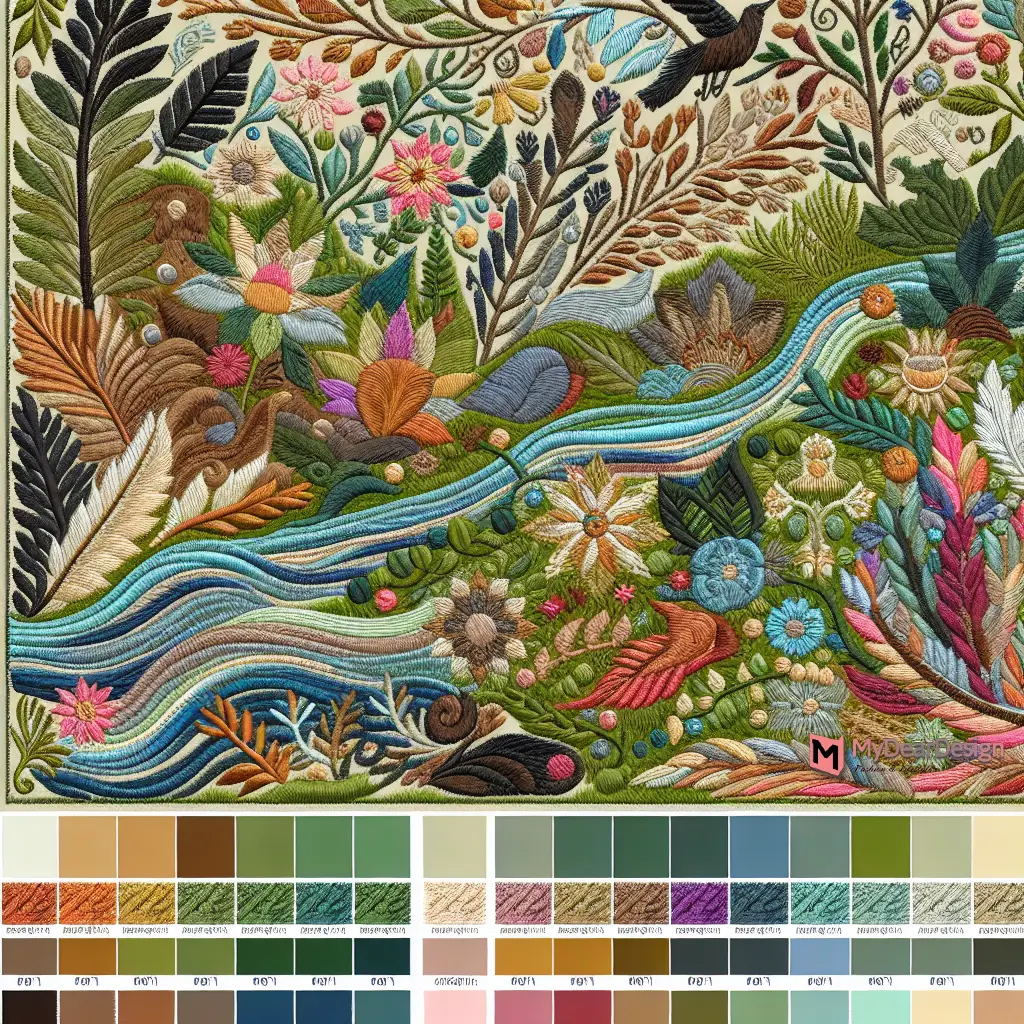
Choosing the right colors is crucial in conveying the essence of nature through embroidery. Earthy tones such as greens, browns, and blues are perfect for evoking a natural feel, while adding pops of bright colors like pinks, yellows, and purples can make the designs more lively and eye-catching. The use of a harmonious color palette, drawing inspiration from natural settings, ensures that each embroidered piece resonates with the beauty of the natural world.
Experimenting with color theory can further enhance the aesthetic of nature-inspired embroidery. Utilizing principles like monochromatic schemes or complementary colors helps in achieving a balanced and visually appealing design. For instance, a design featuring a navy blue background with orange highlights can make the elements stand out, providing a striking contrast that captures attention.
Through the thoughtful combination of themes and colors, nature-inspired embroidery designs offer a creative way to bring the tranquility and beauty of the natural environment into any space, making them a cherished addition to any home decor collection.
Personalized Embroidery Designs
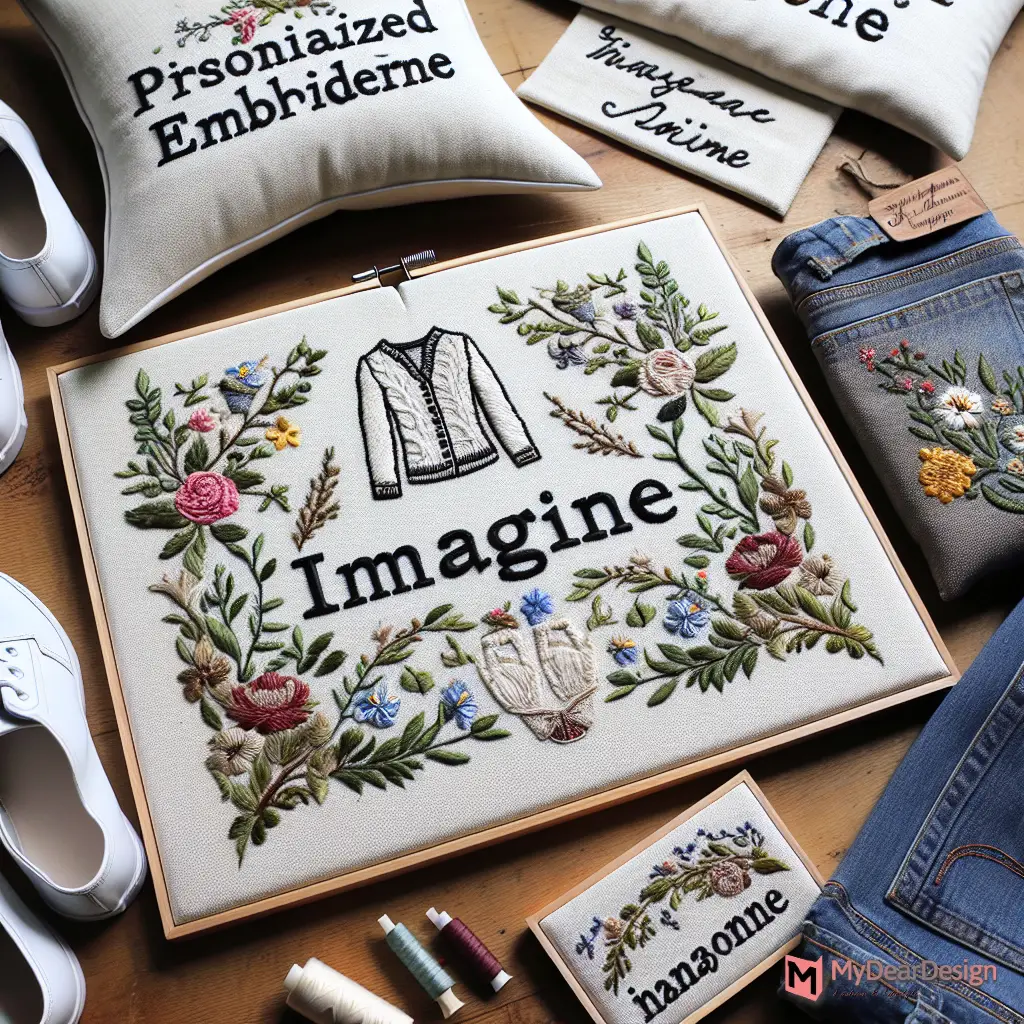
Personalized embroidery designs are a fantastic way to infuse a unique character into various items, ranging from clothing and accessories to home décor elements like cushion covers. These designs allow for the incorporation of names, initials, or meaningful messages, making each piece distinctly personal and reflective of individual style.
Customizing with Names or Initials
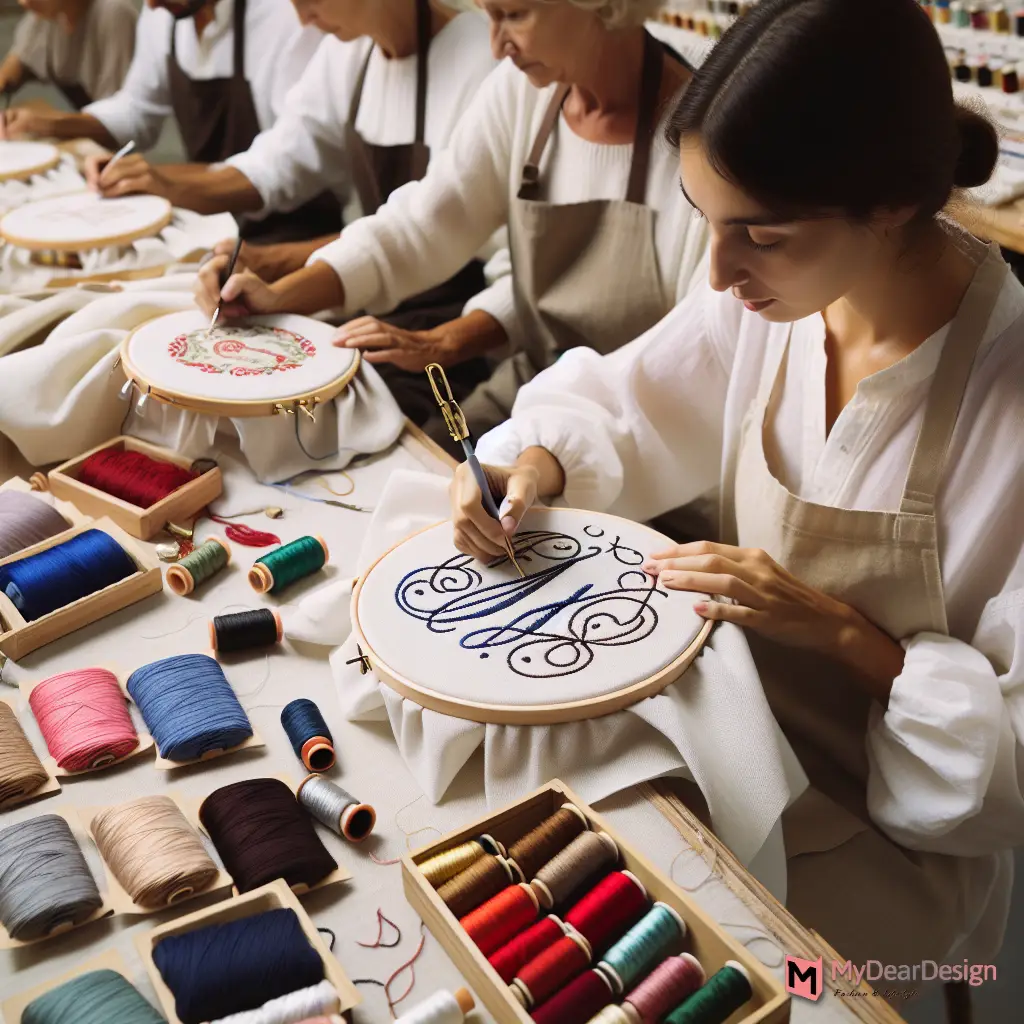
Customizing items with names or initials is a popular and cherished choice in personalized embroidery. This approach enables individuals to create one-of-a-kind pieces that are tailored to personal tastes or intended as special gifts. A variety of font styles and thread colors are available, offering endless possibilities to achieve the desired aesthetic. Whether it’s embroidering a monogram on a robe or adding a special nickname to a tote bag, each customized item stands out as a reflection of personal identity or a thoughtful gesture.
Gift Ideas with Personalized Designs
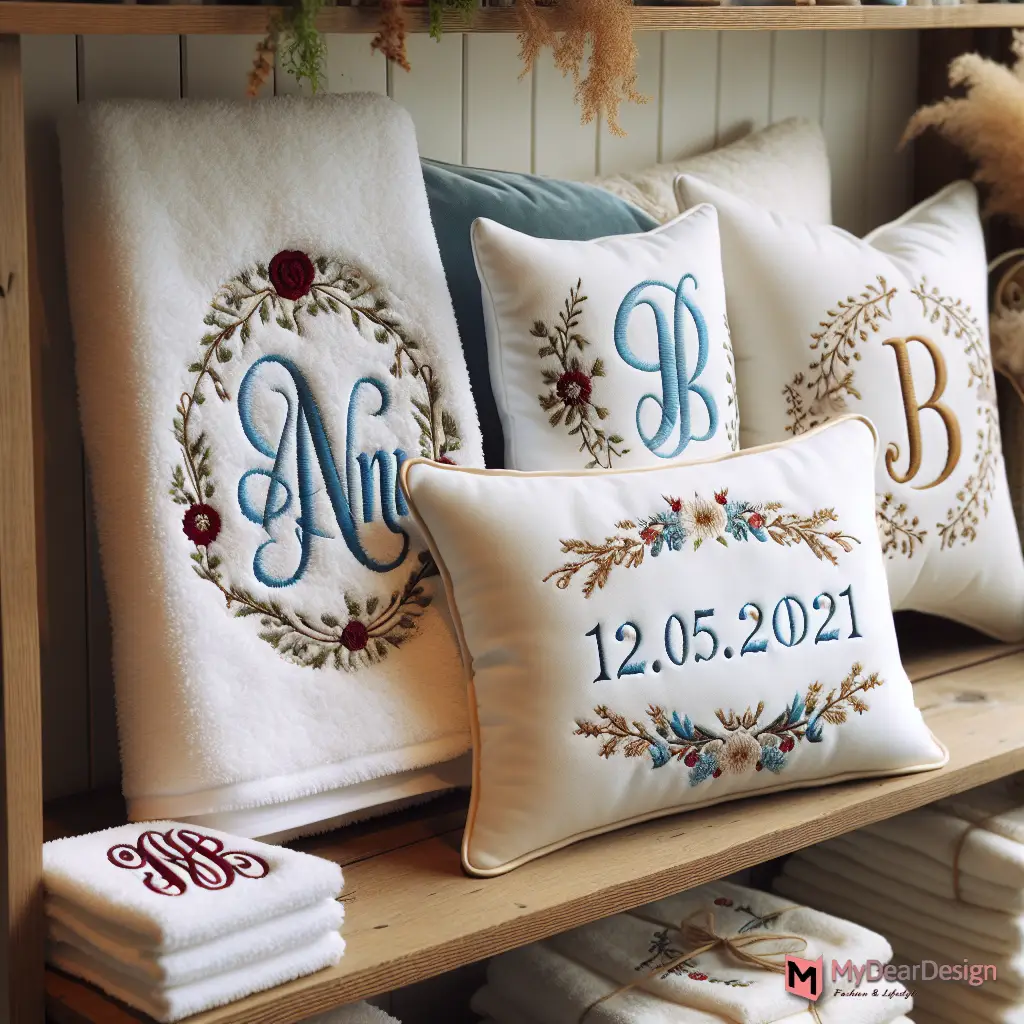
Personalized embroidery extends beyond personal use into the realm of unique and heartfelt gift ideas. Embroidering someone’s name, initials, or a special date on items like towels, pillows, or blankets transforms an ordinary gift into a memorable treasure. These customized gifts are perfect for occasions such as weddings, birthdays, and anniversaries, where a personal touch can make all the difference. From simple monograms to elaborate graphics, the scope of designs is vast, allowing gift-givers to tailor their presents to the tastes and preferences of their loved ones.
In conclusion, personalized embroidery offers an artistic avenue to express individuality and thoughtfulness through the medium of needle and thread. Whether enhancing one’s own collection of items or crafting unique gifts for others, the possibilities are as limitless as one’s creativity.
Festive and Seasonal Embroidery Designs
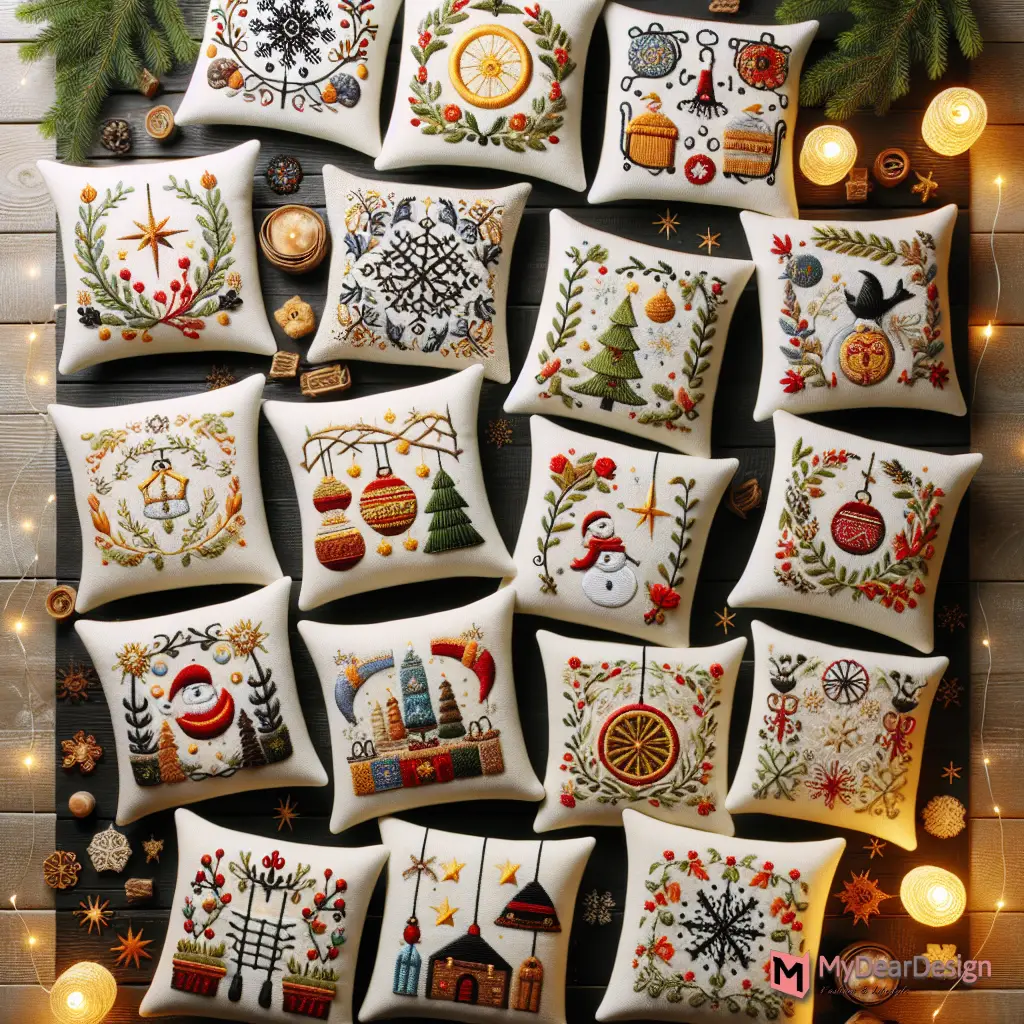
Festive and seasonal embroidery designs bring a special charm to cushion covers, reflecting the spirit of various holidays and changes in nature throughout the year. These designs are perfect for adding a festive touch to home decor, making each season feel uniquely celebrated.
Themes for Various Seasons
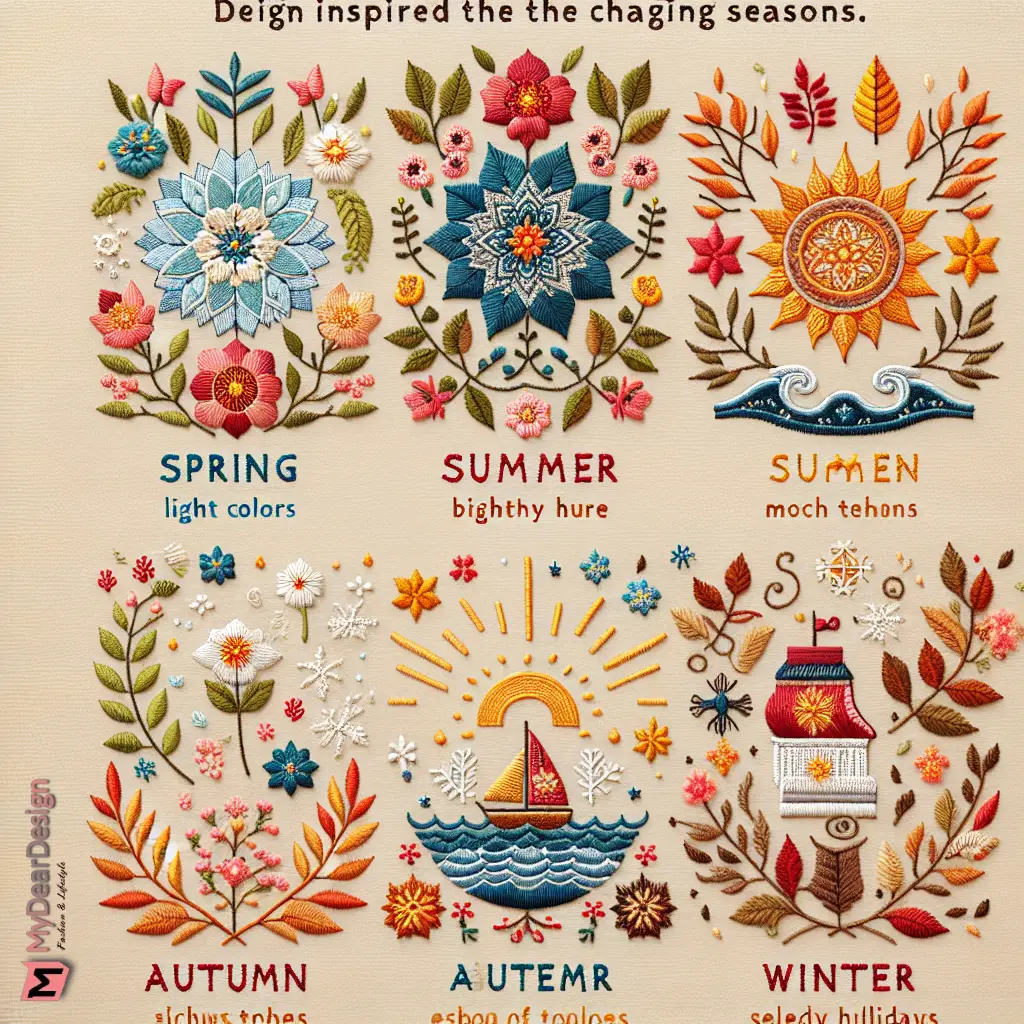
Each season inspires its own themes in embroidery, from the blooming flowers of spring to the cozy motifs of winter. Spring designs often feature light, airy colors with floral patterns, while summer might focus on brighter, vibrant hues depicting sun motifs and beach scenes. Autumn embroidery can include warm tones with leaves and harvest themes, while winter designs embrace cooler colors, showcasing snowflakes and festive holiday elements. These seasonal themes not only enhance the aesthetic appeal of cushion covers but also create a timely ambiance in any living space.
Creating Festive Designs
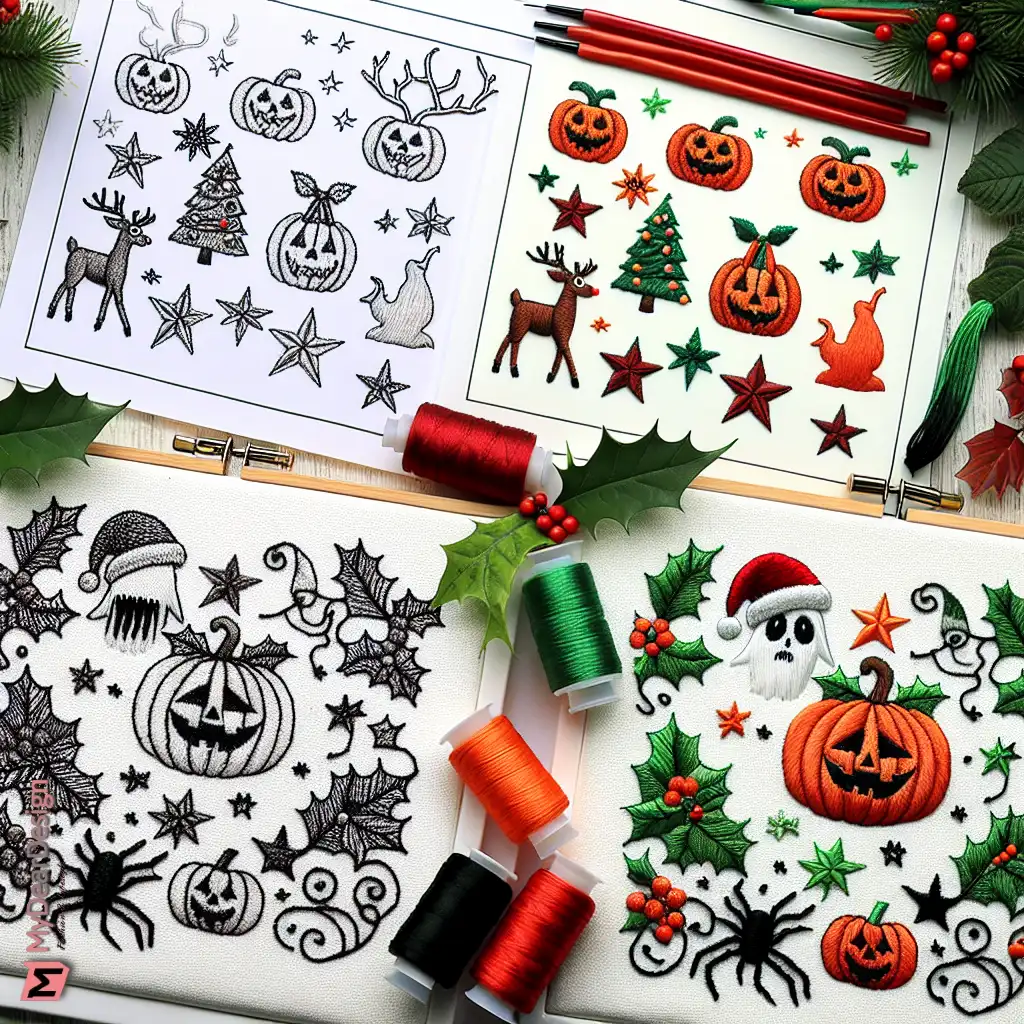
Creating festive embroidery designs involves selecting motifs that resonate with specific holidays or celebrations. For instance, cushion covers for Christmas might feature holly leaves, stars, or reindeer, while designs for Halloween could include pumpkins, ghosts, and eerie landscapes. The process begins with sketching out the design, choosing threads that complement the festive theme, and then meticulously stitching the patterns onto the cushion covers. This not only personalizes the space but also brings a sense of joy and festivity that enhances the overall holiday experience.
Conclusion
Throughout this exploration of the world of hand embroidery designs for cushion covers, we’ve journeyed through a diverse landscape of creativity and craftsmanship, from the intricate beauty of floral and geometric patterns to the personal touch of customized designs. Each section of this article has not only served as an inspirational guide but also highlighted the immense potential for personal expression and home decor enhancement that hand embroidery offers. In showcasing the top embroidery designs for cushion covers, we’ve seen how traditional techniques meld with contemporary styles to create pieces that are both beautiful and meaningful, reflecting the personalities and stories of their creators.
The significance of these embroidery designs extends beyond mere decoration; they encapsulate a blend of artistic vision, cultural heritage, and personal memories, transforming everyday items into treasures of aesthetic and emotional value. As we conclude, remember that these designs are but a starting point for your own creative journey—a journey that promises endless possibilities for transformation and innovation. For more inspiration and a gateway to unleashing your embroidery potential, explore further at mydeardesign.com. Let the beauty of hand embroidery designs for cushion covers inspire you to craft pieces that speak to the heart, enhancing not just your home décor but also connecting with the rich tapestry of tradition and creativity that embroidery embodies.
FAQs
Q: What are the steps to embroider a cushion cover?
A: To embroider a cushion cover, start by sketching your design directly onto the fabric using a pencil, or if drawing isn’t your strong suit, print the design and pin it to your cushion cover. Next, position your embroidery hoop over the area you want to work on. Thread your needle with yarn, secure it with a knot at the end, and begin by backstitching along the design lines.
Q: How many different embroidery styles originate from India?
A: (The answer to this question was not provided in the original input.)
Q: Can you explain how to perform hand embroidery?
A: (The answer to this question was not provided in the original input.)
Q: What are some common types of hand embroidery?
A: There are several popular types of hand embroidery, including Outline Embroidery, Whitework Embroidery, Candle Wicking Embroidery, Patchwork Embroidery, and Shadow Work Embroidery. The most frequently used stitches in these styles are the Backstitch, Running Stitch, Straight Stitch, French Knot, Stem Stitch, Chain Stitch, and Satin Stitch.


